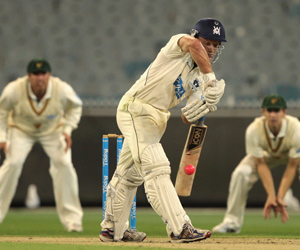by Oliver Wright
27th November 2015- A date that could
possibly change the course of cricketing history. Australia faced New Zealand
at Adelaide, in the 3rd and final match of a series Australia were winning 1-0.
Aside from providing a fitting platform to pay tribute to the one-year
anniversary of the death of the Australian Batsman Phillip Hughes, it marked
the first day of the inaugural day/night test match. The game was to be played
out from 14:00 until 21:00 with a pink ball, designed to be visible in both
natural and floodlit conditions, with the first ever ‘dinner break’ being held
from 18:20 to 19:00.
The Arguments
Although the concept
has been trialled domestically on multiple occasions, most notably with the
traditional season opening fixture between the county champions and the MCC
being held under lights in Dubai since 2010, the topic has still proven to be
divisive, with many of crickets’ high-profile names highlighting their opinions
on the matter. Legends of the game such as Shane Warne (ex-Australian bowler),
Steve Waugh (former Australian Captain), and Sir Garfield Sobers (ex-West
Indian all rounder) have all shown their support for the idea, with Test Match
Specials’ Geoffrey Boycott, even saying he believed change has to be instigated
to prevent the longer form of the game from ‘dying’. Unfortunately, Boycott’s
comment is relevant, as Test Cricket crowds outside England are falling at a
dramatic rate. Earlier in November the top six Test Match sides were playing
each other at the same time (England v Pakistan, Australia v New Zealand, and
South Africa v India), and all the matches were poorly attended, with the first
day of the England vs Pakistan match in Abu Dhabi only being watched by 54
fans.
Many fans are
struggling to make it to games, as they tend to take place across the working
week, limiting the number of days that people can sacrifice to watch. As a
result, the seemingly obvious and necessary decision has been made to increase
the numbers attending, as what could be better after a hard day of work or
school, than an evening spent watching some of the world’s greatest, battling
it out in the pinnacle of cricket’s formats.
There are some who
disagree with the change however, with the main concern of the critics being
that the pink ball may behave in unusual ways, leading to an uneven contest
between bat and ball, damaging the foundations of the reputation of a game that
has remained almost unaffected in its traditionalist state for over one hundred
years. The red ball has been used for such an extensive period of time to great
effect, making the risk of using the pink ball foolish as if a team were to get
bowled out for 50, or if a player was to hurt themselves because of the change,
all of the cynics would be up in arms against the new format, and would most
likely have more weight and support in their arguments.
Former England Batsman
Kevin Pietersen has made his point of view clear by saying ‘Wickets change at
night. Who wants to see a new ball at certain grounds around the world at 8
o'clock at night under lights. Are you mad?’ And as an avid supporter of Test
Cricket, I can understand this, because whether you agree with the novelty of
Pink ball cricket or not, it will change the way the game is played, and new
tactics will have to be produced to reap the full benefit of both the pitches
and ball.
The Match
Overall, the 3rd
Test Match between Australia and New Zealand proved to be a fairly low-scoring
affair, with Australia just edging their neighbours out by 3 wickets in a close
yet comfortable encounter. With New Zealand scoring 202 and 208 respectively in
their first and second innings, and Australia amassing 224, the Baggy Greens
were left to score 187 on the third day, and although facing a tough battle
against Trent Boult (5-60) and the wobbling ball, Shaun Marsh hit a
match-winning 49 as his side limped to the target 7 wickets down.
Even though ball
dominated proceedings, the experiment with the new form of the game could be
seen as a success. The three days brought in a total crowd of 123,736 people,
and the extra swing from the pink ball excited spectators and commentators
alike, with former players Michael Vaughan and Glenn McGrath tweeting in
support of the idea. Furthermore, the Australian Cricket Board have already
invited Pakistan to play a day-nighter in 2016, while Pakistan themselves are
considering the possibility of holding one in the UAE.
Unfortunately, you should not expect to be seeing
these matches in England in the near future, as our Test Match attendances are
currently good, and the damp, cold evenings would merely push crowds away. For
now however, cricket fans should revel in the suitable saviour for the longest
form of the game in desperate need for a modern boost.

Comments
Post a Comment
Comments with names are more likely to be published.